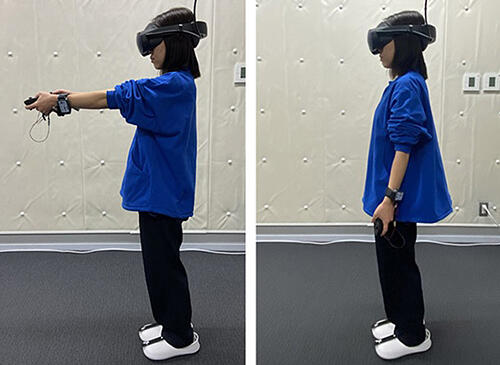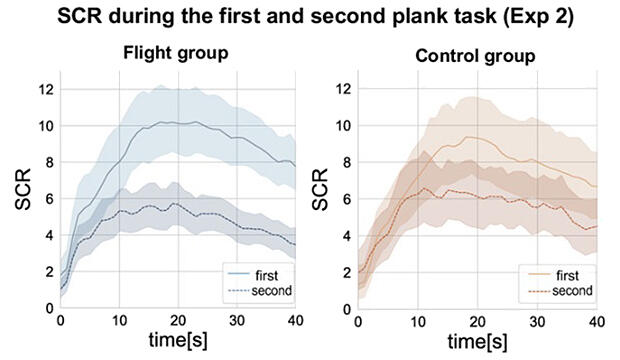The National Institute of Information and Communications Technology (NICT) has revealed that experiencing free low-altitude flight in virtual reality (VR) reduces both physiological and subjective fear responses in people with acrophobic tendencies. The research showed that the brain's "prediction that one can transition to a safe state through one's own actions" could be a new mechanism for eliminating fear. This raises hopes that VR might be used as a treatment method for acrophobia.

Provided by NICT
According to Director Masahiko Haruno of NICT's Brain Information Engineering Research Laboratory, who focuses on Computational Neuroscience, the mainstream approach for people to overcome fear has been repeatedly experiencing fear-inducing situations. This is believed to work through a learning mechanism that creates memories of "this situation is not dangerous."
However, in cases like acrophobia, repeatedly going to actual high places is not realistic. Haruno and his team considered that using VR, which allows pseudo-experiences of computer-generated virtual spaces as if they were real, might reduce fear through predictions that "one can transition to safe situations through one's own actions."
The researchers asked students and others at the University of Osaka, where the laboratory is located, questions to measure their degree of acrophobia and gathered 85 participants with acrophobic tendencies. After performing tasks to get accustomed to VR, participants walked on a plank protruding from a high-rise building 80 floors high, 300 meters above ground, in VR. Electrodes attached to their fingers measured skin conductance to quantify how much they were "breaking into a sweat" as a physiological fear response.
Additionally, participants were asked to select their fear level on an 11-point scale from "not scary at all (0)" to "unbearably scary (10)" to quantify subjective fear responses. Participants were then divided into flight and control groups. The flight group consisted of 44 people who performed low-altitude flight below 5 meters for 7 minutes while freely controlling direction with handheld controllers in VR space. The control group consisted of 41 people who watched VR flight footage of others without controlling direction themselves. Furthermore, both the flight group and control group walked on the high-rise building plank again in VR to measure physiological and subjective fear responses.

Provided by NICT
Among both the flight group and the control group, perspiration levels determined from skin conductance and fear levels were lower during the second high-altitude walk compared with when they first walked on the high-rise building plank in VR (first high-altitude walk), but the flight group showed a greater decrease in perspiration. Similar results were obtained when the same experiment was conducted with 46 people in the flight group and 28 people in the control group.

Provided by NICT
Using questionnaire data collected after the experiment, regression analysis of the amount of physiological fear reduction was conducted. The analysis revealed that physiological fear decreased more when participants felt "falling would not be dangerous because they could fly" during the second high-altitude walk.
If future research can confirm whether VR-based acrophobia reduction has long-term effects in the real world, practical applications for VR-based treatment and support could be expected. The research was supported by the Japan Science and Technology Agency (JST)'s Strategic Basic Research Programs, JST Moonshot Research and Development Program, and the Ministry of Education, Culture, Sports, Science and Technology's Grants-in-Aid for Scientific Research. Research results were published in the electronic edition of the Proceedings of the National Academy of Sciences (PNAS) on May 13.
Original article was provided by the Science Portal and has been translated by Science Japan.




